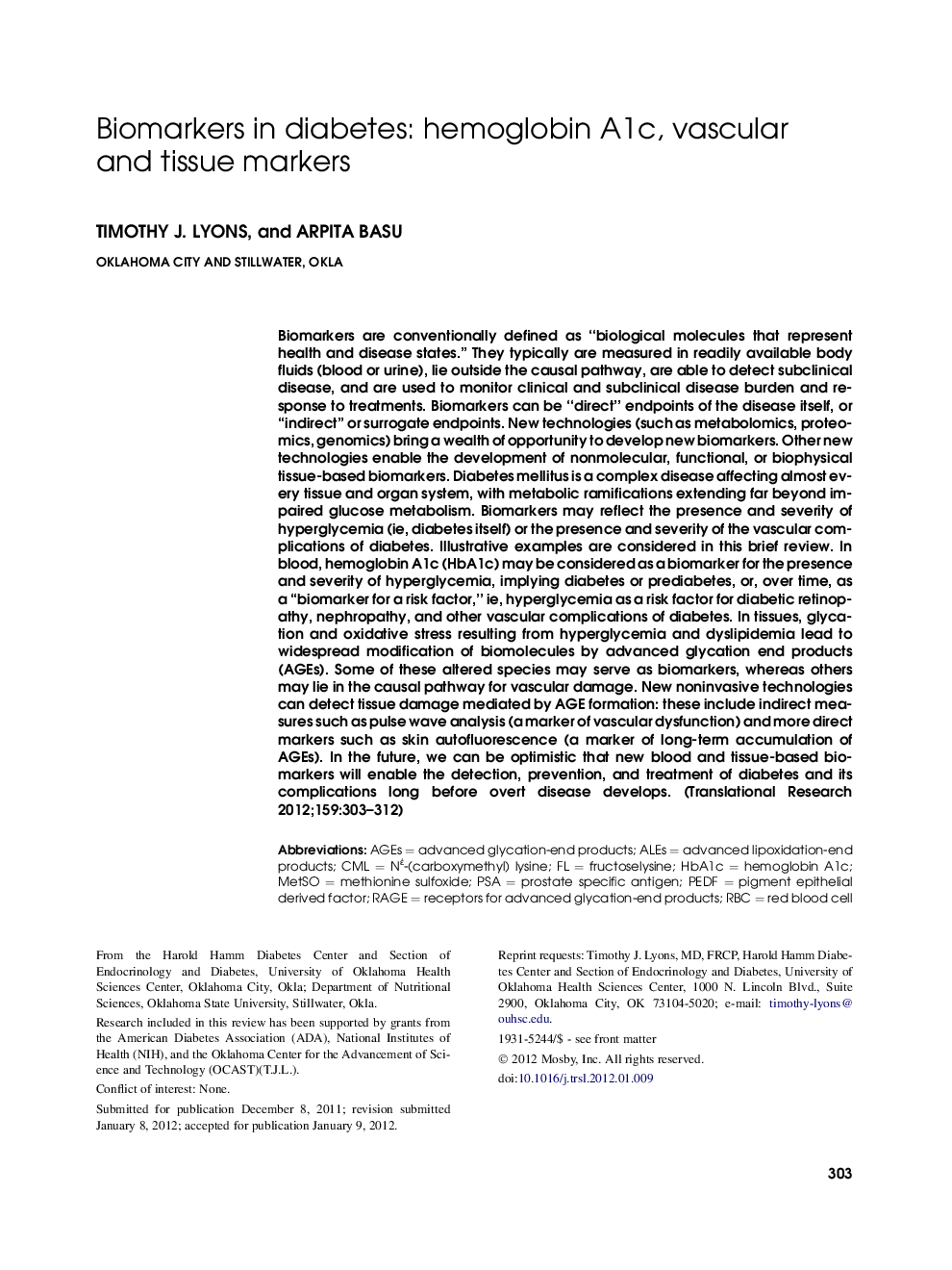| کد مقاله | کد نشریه | سال انتشار | مقاله انگلیسی | نسخه تمام متن |
|---|---|---|---|---|
| 3841036 | 1247954 | 2012 | 10 صفحه PDF | دانلود رایگان |

Biomarkers are conventionally defined as “biological molecules that represent health and disease states.” They typically are measured in readily available body fluids (blood or urine), lie outside the causal pathway, are able to detect subclinical disease, and are used to monitor clinical and subclinical disease burden and response to treatments. Biomarkers can be “direct” endpoints of the disease itself, or “indirect” or surrogate endpoints. New technologies (such as metabolomics, proteomics, genomics) bring a wealth of opportunity to develop new biomarkers. Other new technologies enable the development of nonmolecular, functional, or biophysical tissue-based biomarkers. Diabetes mellitus is a complex disease affecting almost every tissue and organ system, with metabolic ramifications extending far beyond impaired glucose metabolism. Biomarkers may reflect the presence and severity of hyperglycemia (ie, diabetes itself) or the presence and severity of the vascular complications of diabetes. Illustrative examples are considered in this brief review. In blood, hemoglobin A1c (HbA1c) may be considered as a biomarker for the presence and severity of hyperglycemia, implying diabetes or prediabetes, or, over time, as a “biomarker for a risk factor,” ie, hyperglycemia as a risk factor for diabetic retinopathy, nephropathy, and other vascular complications of diabetes. In tissues, glycation and oxidative stress resulting from hyperglycemia and dyslipidemia lead to widespread modification of biomolecules by advanced glycation end products (AGEs). Some of these altered species may serve as biomarkers, whereas others may lie in the causal pathway for vascular damage. New noninvasive technologies can detect tissue damage mediated by AGE formation: these include indirect measures such as pulse wave analysis (a marker of vascular dysfunction) and more direct markers such as skin autofluorescence (a marker of long-term accumulation of AGEs). In the future, we can be optimistic that new blood and tissue-based biomarkers will enable the detection, prevention, and treatment of diabetes and its complications long before overt disease develops.
Journal: Translational Research - Volume 159, Issue 4, April 2012, Pages 303–312